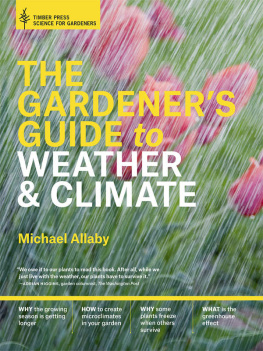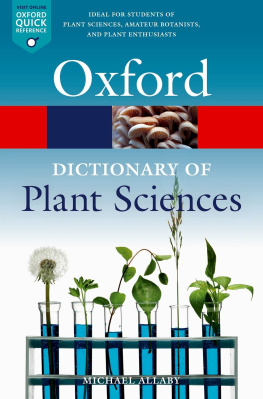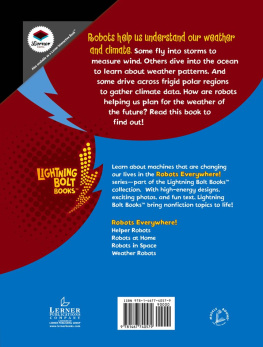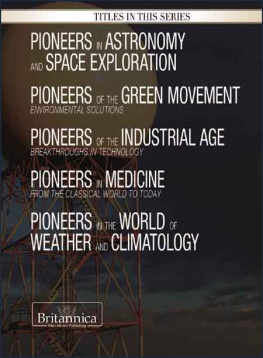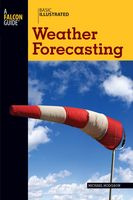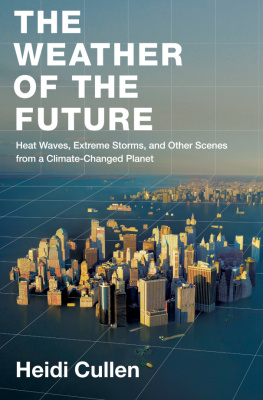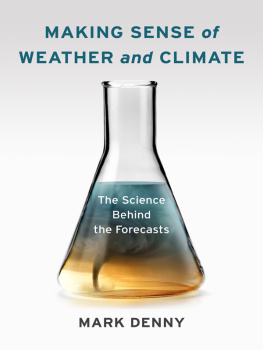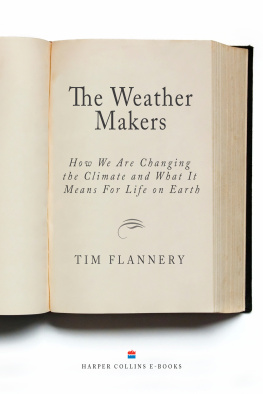THE GARDENERS GUIDE to WEATHER & CLIMATE
Michael Allaby
TIMBER PRESS
PORTLAND, OREGON
Acknowledgements
I wish to thank Anna Mumford for her enthusiasm and always-cheerful support, and Michael Dempsey, my editor at Timber Press, for helping me avoid making a fool of myself. If, despite his efforts, absurd errors remain, they are my fault, not his.
Copyright 2015 by Michael Allaby. All rights reserved.
Published in 2015 by Timber Press, Inc.
Photo and illustration credits appear on .
Front cover photo by OGphoto
Back cover photos (from left to right) by Sermork/Shutterstock.com, Wikimedia/Thomas Bresson, Albert Russ/Shutterstock.com, Galyna Andrushko/Shutterstock.com, Denis Burdin/Shutterstock.com, Ilaszlo/Shutterstock.com, and Jacek Nowak/123rf
The Haseltine Building
133 S.W. Second Avenue, Suite 450
Portland, Oregon 97204-3527
timberpress.com
Text design by Patrick Barber
Cover design by Debbie Berne
A catalog record for this book is also available from the British Library.
Library of Congress Cataloging-in-Publication Data
Allaby, Michael.
The gardeners guide to weather and climate / Michael Allaby.First.
pages cm
Includes index.
ISBN 978-1-60469-694-3
1. Gardening. 2. Crops and climate. I. Title.
SB453.A618 2015
Contents
Introduction
ANYONE WHO CULTIVATES PLANTS OUTDOORS depends on the weather, and the effects of bad weather can be dramatic. The long, cold start to 2013, for example, meant that an event held every April to demonstrate and sell mowing machinery in Dumfries, Scotland, had to be cancelled for want of grass. Bad weather destroys crops and good weather means abundant harvests. So it has been throughout history and gardeners are no less affected by the weather than farmers. There is a difference of course, in that for most gardeners a crop failure does not mean they and their families will go hungry or the creditors will come knocking at the door. Also gardeners enjoy more flexibility than is possible for farmers when deciding which plants to grow. Nevertheless, gardeners need to be able to recognize suitable conditions for sowing and planting, to know which plants to position where, and how best to help their plants survive adverse conditions. In a word, they need to understand something of how the weather works and how to predict its vagaries.
Understanding the weather means that although gardeners are affected by it they need not necessarily live at its mercy. Plants are adapted to the climates in which they grow, and adapt rapidly to climatic changes, and an informed gardener may be better equipped to make appropriate choices of species, varieties, and techniques. This book aims to help. It explains, simply and succinctly, the basic principles of climatology, which is the study of climates, and meteorology, which is the study of weather, with particular reference to gardening and garden plants.
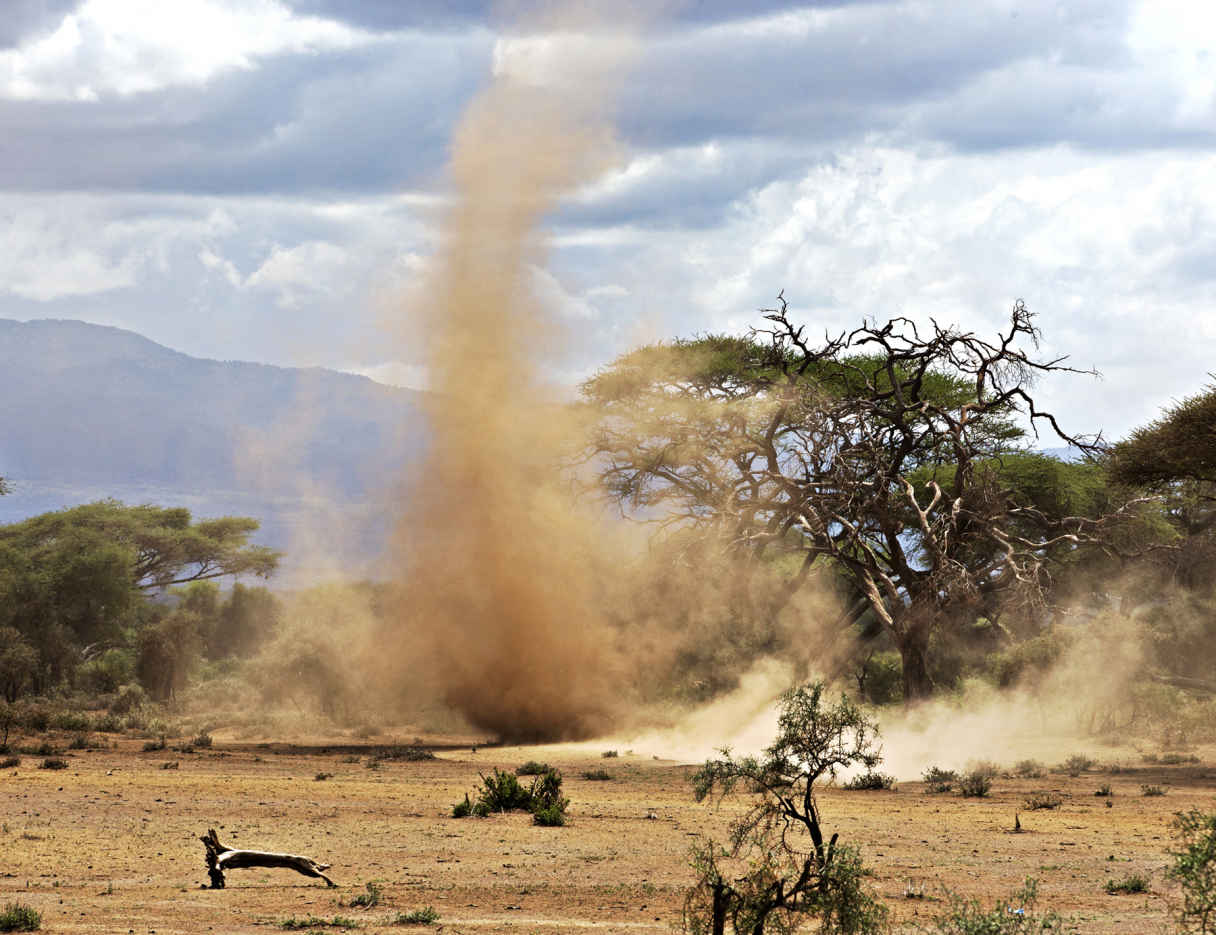
When uneven heating makes a patch of ground hotter than its surroundings, rising air over the warm patch draws in air to replace it. Air converging toward the low pressure turns about a vertical axis and spirals upward carrying with it dust and small fragments of debris. It is then a dust devil.
The first chapter describes the principal processes by which the action of solar radiation and the Earths rotation and orbit produce the worlds climates. It ends with an explanation of how climates are classified and a brief description of the worlds main types of climate.
Climates do not remain constant. There are cave paintings showing people sailing in canoes in what is now the Sahara Desert, sharing their environment with a variety of animals including hippopotamuses, which are semi-aquatic. Thus the second chapter discusses the history of climate, leading to recent climatic changes, their likely implications, and a brief outline of past attempts to control the weather.
Climate is the average weather recorded over a period of decades. The third chapter, therefore, describes weather in more detail. It tells how differences in surface pressure combine with the planets rotation to produce winds, and of the chain linking the compressibility of air, the formation of clouds, precipitation, and storms. It describes the different forms of precipitation, a term that includes fog, and it explains the causes of extreme events such as tornadoes and hurricanes.
This is all quite general, though, so the fourth chapter deals with microclimates, which are the local variations that matter to anyone trying to cultivate the land. It describes how friction slows the wind and produces eddies, how conditions change on hillsides, why some places are suntraps and others frost hollows. It describes where you should expect snow to form drifts, the effect shelterbelts, hedges, and fences have on the wind, and it ends by explaining why towns have a distinctly different climate from the surrounding countryside.
Wind, rain, freezing, and thawing together wear down rocks and break them into the tiny fragments that are the basis of soils, and chemical reactions among the compounds that dissolve out of the rock fragments release the nutrients that sustain soil life. The next chapter describes soils. It tells of how soils form and how they age, how they form different types, and how soils are classified. It explains how water moves through the soil and how irrigation can modify that process for the benefit of cultivated plants.
The first stage in soil formation is called weathering. The name is apt, although it is not confined to the physical actions of wind, water, and changing temperature. Nevertheless, weathering produces the substrate that supports plant life. Plants are not passive, however. They help themselves by adapting to the conditions in which they occur. The sixth chapter describes some of the ways plants have responded to climate. It describes the effects on plants of freezing and how hardiness is defined. It explains the significance of the difference between deciduous and evergreen leaves, and why spring flowers flower in spring. Deserts present special challenges for plants and the book shows how they have met them. Everyone has heard and probably seen pictures of the vast carpet of flowers that bloom within hours of a desert deluge. You will read here of how and why that happens. The chapter ends by explaining the differences between the three pathways of photosynthesis and why they are important, the difference between photosynthesis and photorespiration, and, finally, how certain plants thrive in saline habitats.
The book then returns to some of the biomes that climates produce and describes the plants most typical of some of those biomes. The short final chapter outlines a few of the ways gardeners can help their plants thrive better in good weather and survive harsh weather.
Climate
As I write this it is raining, but with some hope of the rain moving away eastward later in the day. It is mild for this time of year with snow over high ground but none at lower levels. Rain and snow, sunshine and cloud, warmth and cold, these are the phenomena that make up the weather, the conditions we experience day by day.

Arctic tundra consists of low-growing plants growing on a treeless plain. Grasses are usually present, but the predominant plants are sedges (

